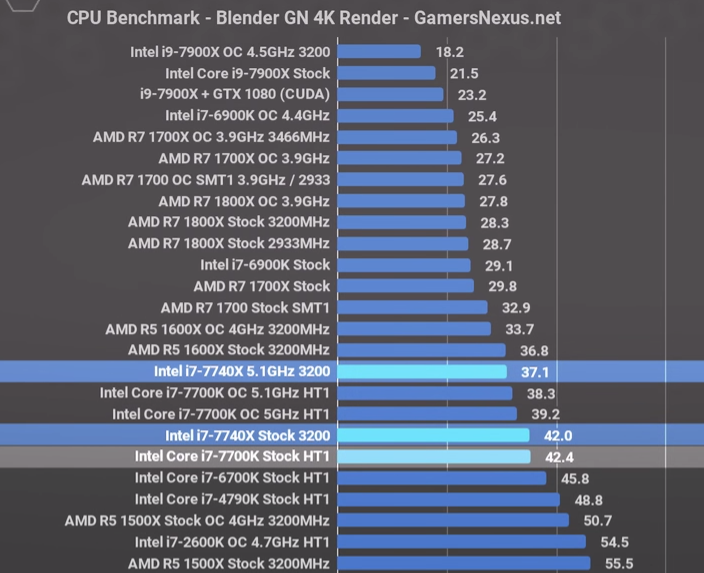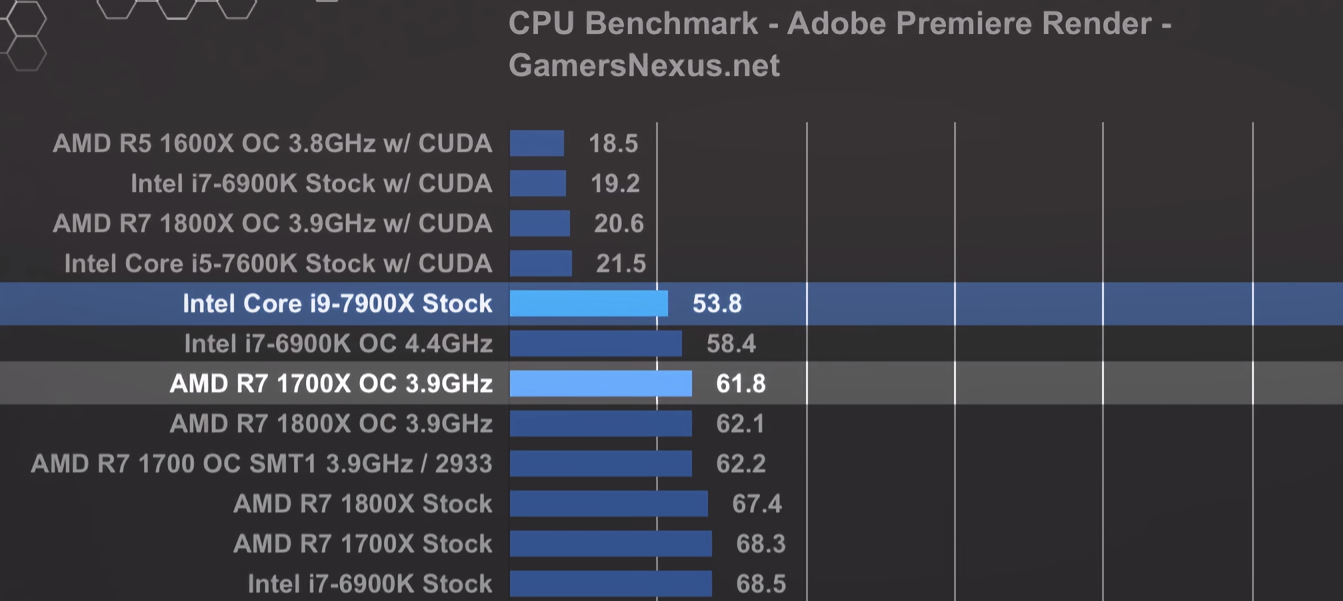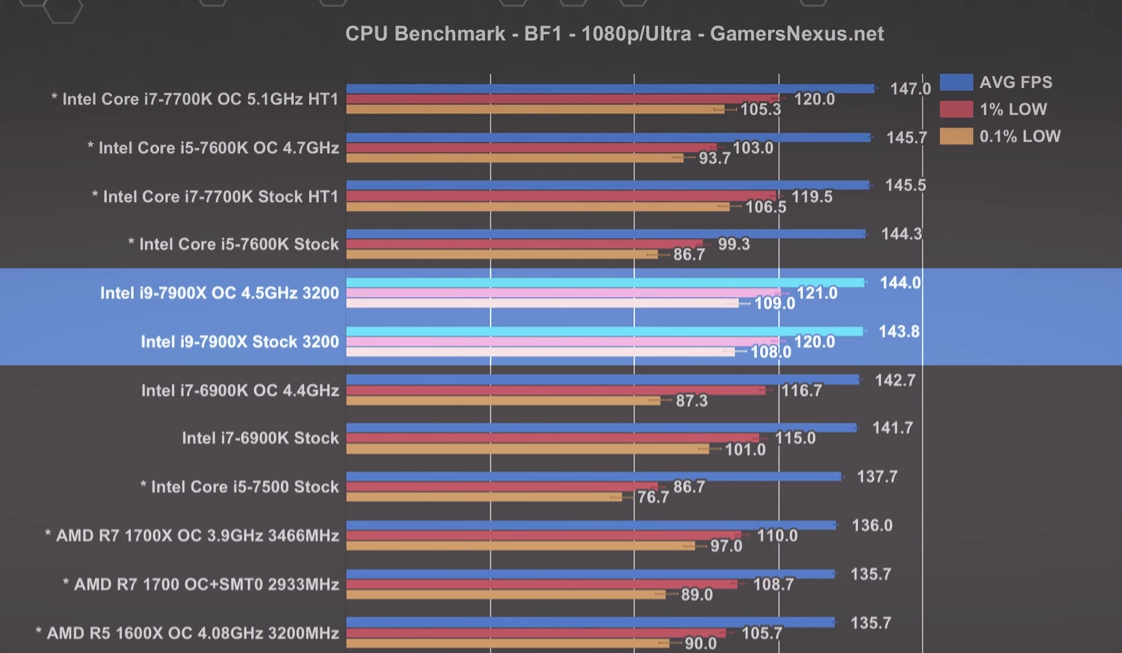Intel’s X299 Platform and Why Enthusiasts Are Confused
Just a few months ago, we saw the release of AMD’s Ryzen CPU line up with the Ryzen 7 and 5, with Ryzen 3 coming in the near future. Now we have new buzz in the CPU scene, with Intel officially announcing its X299 enthusiast platform featuring the Skylake-X and Kaby Lake-X processors. But oddly enough, the excitement that we saw during the Ryzen release is not felt. Why is that? In this article, we’ll talk about what the X299 platform is, the specs of the new Skylake-X and Kaby Lake-X processors, and why it’s in such a weird place in the CPU market today.
What is X299?
X299 is what Intel is calling its enthusiast platform which supports the Skylake-X and Kaby Lake-X CPUs. It is the successor to the X99 platform released back in August of 2014 which supported the Haswell-E and Broadwell-E CPUs. Since it’s a new platform, it comes with the new LGA2066 socket that fits Skylake-X and Kaby Lake-X processors. So using non-X299 motherboards with Skylake-X or Kaby Lake-X CPUs, or trying to use other CPUs with X299 motherboards, won’t work as they simply won’t fit. Being a new high-end desktop platform, X299 features “up to four channels DDR4” RAM, “up to 44 lanes PCIe”, and support for overclocking. It’s probably worth noting is that there are no integrated graphics that come with the supported CPUs.
Being a new high-end desktop platform, X299 features “up to four channels DDR4” RAM, “up to 44 lanes PCIe”, and support for overclocking. It’s probably worth noting is that there are no integrated graphics that come with the supported CPUs.
So what are the details on the new Skylake-X and Kaby Lake-X processors?
For the Kaby Lake-X offerings, we have the i5 7640x which sports 4 cores and 4 threads, has a base clock of 4.0 GHz and boosts to 4.2 GHz, 6MB of cache, TDP of 112 watts, supports DDR4 2666, and 16 PCIe lanes.
There’s also the i7 7740x sporting 4 cores and 8 threads, base clock of 4.3 GHz and boost of 4.5 GHz, 8MB of cache, 112 watts TDP, supports DDR4 2666, and 16 PCIe lanes.
They cost approximately $242 and $339, respectively.
Skylake-X on the other hand has the i7 7800X which is a 6 core/12 thread processor with a base clock of 3.5 GHz and a boost of 4.0GHz. It has 8.25MB of cache, 140 watts TDP, and has support for DDR4 2666 quad-channel RAM and 28 PCIe lanes.
Stepping up, we have the i7 7820X with 8 cores/16 threads and a base clock of 3.6GHz and boost of 4.3GHz. It has 11MB of cache, TDP of 140 watts, and supports DDR4 2666 quad-channel RAM, and 28 PCIe lanes.
Moving away from the i7 territory, we have the i9 7900X. i9 is the new lineup that Intel is debuting with the X299 platform. This processor has 10 cores and 20 threads, a base clock of 3.3GHz and a boost of 4.3GHz. It has a 13.75MB of cache, TDP of 140 watts, and support for DDR4 2666 quad-channel RAM, and 44 PCIe lanes.
These are priced at around $389, $599, and $999, respectively.
There are still the i9 7920X, 7940x, 7960X, and 7980XE for the i9 line up. They haven’t been released yet but according to techadvisor the 12-core 7920X is expected to launch at around August while the rest are to be release at around October.
But Why Isn’t It Generating More Buzz?
So Intel’s releasing a new enthusiast platform and its day-one prices are much lower than the previous enthusiast Broadwell-E processors. With Skylake-X we’re getting a 6 core/12 thread offering for $390 compared to Broadwell-E’s 6 core/12 thread equivalent for $435, and getting a 10 core/20 thread for $1000 compared to Broadwell-E’s $1700. So why is there no hype surrounding this release? In fact, why is it being heavily criticized by big tech reviewers/TechTubers such as Gamer’s Nexus, Linus Tech Tips, Jayz2Cents, and many others?
There are a few possible reasons why this is the case. The first reason, and probably the biggest reason, is that some of the features of the X299 platform will be locked out depending on your CPU. The X299 platform advertises that it’s an enthusiast platform but the PCIe lanes, storage, and RAM supported on the i5 and i7 CPUs are questionable. Paul’s Hardware’s video explains this in depth but in short, if you’re not using the 7900X, you won’t be able to use all the PCIe, M.2, and SATA ports and you’ll have to consult the manuals on which combination of ports you’ll be able to use with just an i5 7640X or i7 7740X. Not only that, but you can’t use half of the RAM slots on your high-end and expensive X299 motherboard as well. And for the storage crazy people out there who want to get this platform for VROC (Virtual Raid On CPU), a technology which lets you mount 8 M.2 NVMe drives then configure it for RAID 0 for 13GBps transfer speeds, get ready to shell out cash for Intel and only Intel. VROC only supports RAID only on Intel drives, so say goodbye to your Samsung drives. Another nail to the coffin, VROC is not compatible with Kaby Lake-X CPUs.

This then begs the question, why are these CPUs in this line up? If you look at the performance stats of the 7740X, it doesn’t differ much from the mainstream, cheaper option the 7700K. I’ll put up some benchmarks from Gamer’s Nexus but their full video will be linked here.


As you can see, these benchmarks show that they’re pretty much the same CPU with very minute differences. The least they could’ve done by adding this to the X299 “enthusiast” platform is enabling more PCIe, storage, or RAM. Intel says that it’s there so that people can buy this and upgrade to something more high-end later, which, to be honest, is a load of crap. If you’re buying the 7740X, you’ll be spending around $350 on your processor and $220 (cheapest X299 motherboard on newegg at the time of writing this) on your motherboard, PLUS $1000 for a new i9 7900X down the line. That’s a total of $1570 compared to just $1220 if you just buy the 7900X straight away. That’s not even mentioning that the 7740X runs very hot even on top of the line AIO water coolers, another added expense. Spending on the 7740X, or even the 7640X, is wasted potential and wasted money. You’re better off getting an i7 7700K for $340 paired with a z270 motherboard for $105 (cheapest one on newegg as of writing).
Speaking of wasted money, another reason why this is such a lackluster release is that the value you get for your money isn’t as good either. We’ve been targeting the lower end of this line up but let’s take a look at the i9 7900X now. Let’s look at benchmarks the of the 7900X from Gamer’s Nexus. Link to the full video here.


We can see that the 7900X trumps all in CPU performance. But this isn’t the whole story. 7900X plus X299 motherboard is $1220, at least. Looking at its closest competitor in terms of performance from AMD, the middle child Ryzen 7: 1700X, would cost you $350 plus $80 (cheapest X370 motherboard from newegg at the time of writing) X370 motherboard. That’s just $430 dollars total. And having a GTX 1080ti, using CUDA with Adobe Premiere, can get you ~20 seconds render time, regardless of what processor you’re using. And if you’re looking to get it for gaming, Intel’s mainstream 7700K is more than enough for the job at a cheaper price. Get with the program, Intel, you’re not the only one on the market anymore. Lower your prices.

What Now Intel?
With AMD Ryzen’s own enthusiast platform, Threadripper, looming in the distance, it seems like X299 is looking to be an ever harder sell. It just seems that Intel jumped the gun with this release because Ryzen’s got them shaking in their little boots. And to be honest, they didn’t need to panic. The 7700K is still the gaming CPU king. Rushing this release only hurt their reputation. But let’s see if there are optimizations that will be put in place in the future to better the performance of X299 and the Skylake-X and Kaby Lake-X processors. There are also the unreleased CPUs, but looking at the current specs and prices of the processors out now, it’s understandable that no one is too excited about them either.
But if there’s one thing to gain from this is that the CPU market is once again becoming competitive. With all the years that they’ve been dormant with marginal improvements from year to year, Intel has woken up to see that they need to compete with AMD once again. And seeing as Coffee Lake, their 8th generation chip, will feature more cores, I think AMD is doing some good with pushing Intel to up their game a bit. Moving forward, I think the CPU scene is going to be a pretty interesting place for PC enthusiasts.



